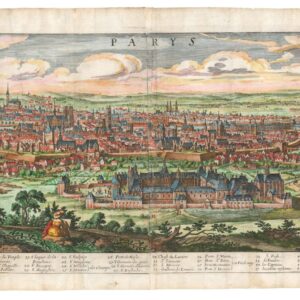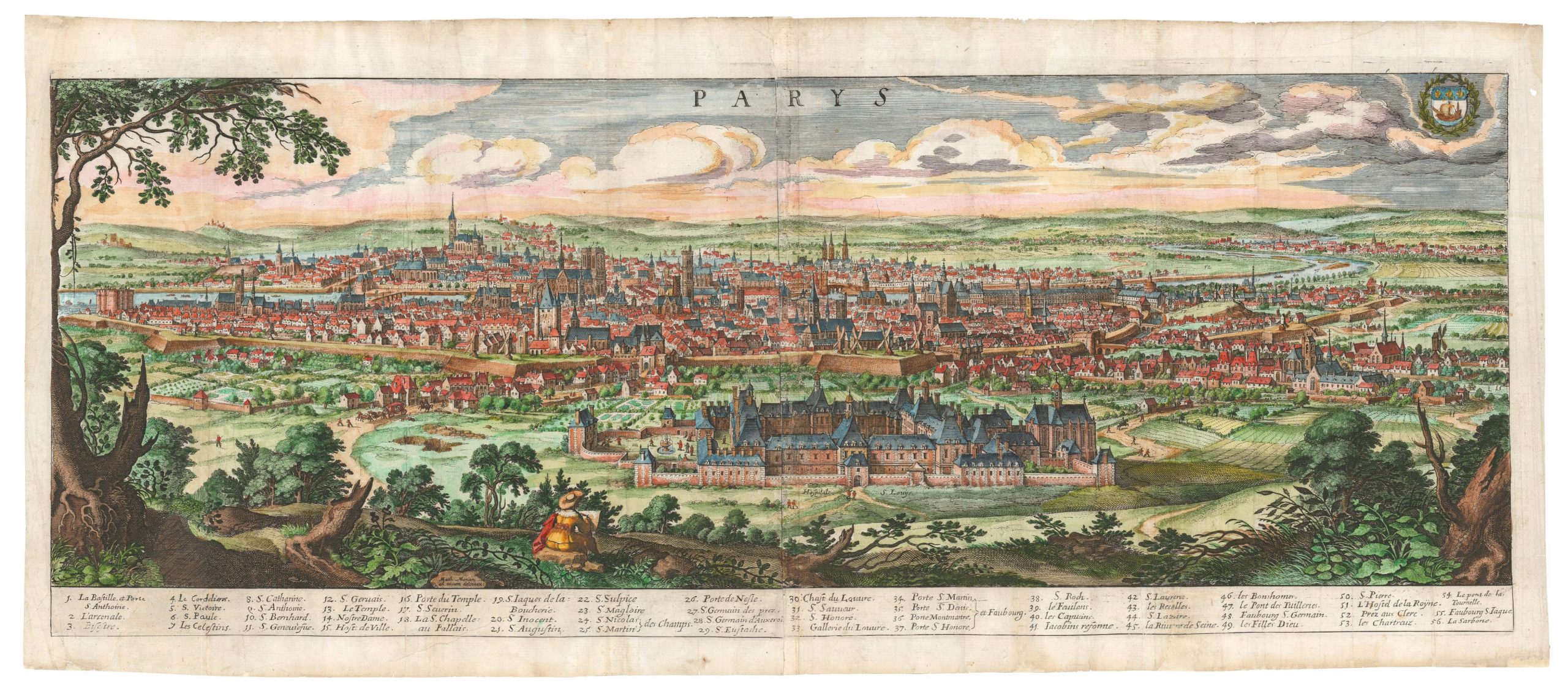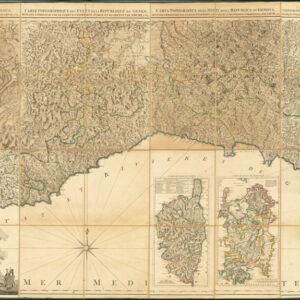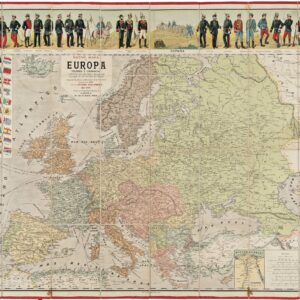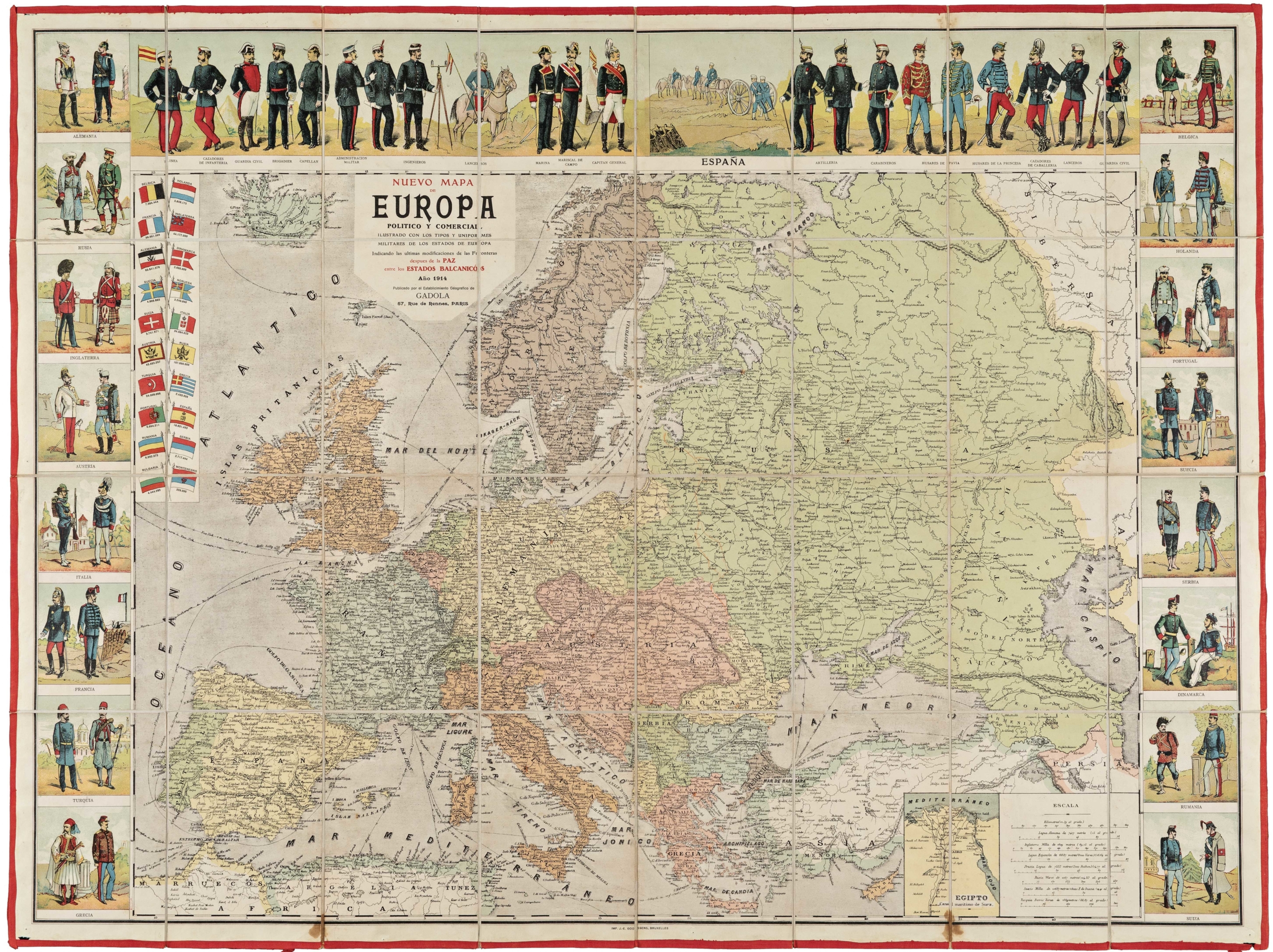The rarest acquirable map of Tuscany.
Geografi della Toscana [Ferdinand de Medici Horse Map].
Out of stock
Description
A Rare Masterpiece of 17th-Century Italian Cartography.
The “Geografia della Toscana”, commonly referred to as the “Carta di Cavallo” (Horse Map), is one of the most exquisite and rare maps of Tuscany from the early modern period. First published in 1609 and later reissued in 1662 by Venetian engraver Stefano Scolari, this remarkable work embodies both cartographic precision and artistic mastery.
The work is originally a 4-sheet map. The offered example consists of the two upper sheets, which include the most visually and historically significant areas of Tuscany: the upper half with all of Tuscany’s most famous cities, including Florence, Siena, Lucca, Montepulciano, Arezzo, and part of Umbria, including Perugia.
Historical Context and Cartographers
- The original version is often attributed to the Florentine cartographer Giuseppe Rosaccio, though evidence suggests that much of the work was executed by his son, Aloisio (Luigi) Rosaccio.
- Stefano Scolari, an accomplished engraver and publisher, was known for reissuing important Renaissance-era maps. His 1662 edition remains one of the finest surviving renditions of this four-sheet grand map.
- The map celebrates the Medici dynasty, featuring a majestic equestrian portrait of Ferdinand I de’ Medici on the right side, symbolizing the family’s power and political unity in the Grand Duchy of Tuscany.
Map Features
- Highly Detailed Depictions
- The topographical accuracy is striking, with intricate representations of mountain ranges, rivers, and valleys.
- Cities and towns—including Florence, Siena, Lucca, Montepulciano, and Arezzo—are meticulously labeled, reflecting the cartographer’s deep geographic and political knowledge.
- Part of Umbria, including Perugia, is also depicted, enhancing the regional scope.
- The “Carta di Cavallo” – A Unique Iconography
- The equestrian figure of Ferdinand I de’ Medici is prominently placed over Umbria, transforming the ruler into a symbolic protector of the region.
- The statue’s base lists the Grand Duke’s various titles, reinforcing the Medici dominance over Tuscany.
- Artistic and Cultural Influence
- The mountainous landscape, cities, and villages are depicted using a three-dimensional perspective, a hallmark of early modern Italian cartography.
- The extensive place-name labeling demonstrates exceptional craftsmanship, with a keen eye for artistic and navigational accuracy.
Rarity and Collectibility
- Complete versions of the four-sheet map are extremely rare, with only a handful of surviving institutional examples.
- Known copies of the original 1609 edition exist in:
- The Bibliothèque nationale de France (two copies).
- The Museo Galileo in Florence (holding an intact example).
- The 1662 Scolari edition, however, does not appear in significant public collections, making it a highly sought-after piece for collectors.
Conclusion
The 1662 Stefano Scolari edition of the “Geografia della Toscana” is an outstanding example of early modern Italian mapmaking, blending geography, art, and political symbolism. With its detailed landscape depictions, extensive labeling, and the imposing Medici equestrian figure, it stands as a testament to the grandeur and influence of Tuscany under Medici rule. The map’s rarity makes it a prized addition to any serious cartographic or historical collection.
Cartographer(s):
Stefano Scolari was an Italian cartographer active in the latter half of the 17th century. He had been trained as an engraver in Brescia but did most of his formal work from Venice, where he owned a famous shop in S. Zulian under the sign of the Three Virtues.
Scolari engraved, published, and sold both prints and maps but was especially known for re-issuing important maps from the 16th and beginning of the 17th century. Examples include Gastaldi’s three-sheet map of Lombardy (1561), Rosaccio’s four-sheet map of Tuscany (1609), and Greuter’s monumental 12-sheet map of Italy (1630).
Condition Description
Very good. Verso repairs to centerfold on both sheets. Repaired hole at bottom-right of left hand sheet.
References
![Delimitation de la Zone Occupee [German Occupation of France]](https://neatlinemaps.com/wp-content/uploads/2019/12/NL-00782-scaled-300x300.jpg)
![Delimitation de la Zone Occupee [German Occupation of France]](https://neatlinemaps.com/wp-content/uploads/2019/12/NL-00782-scaled.jpg)
